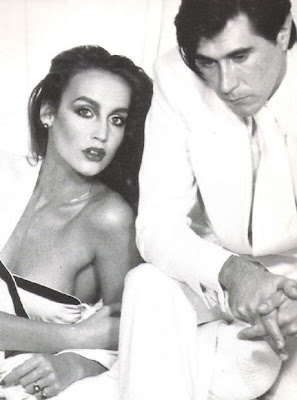
(This is a slow loris. It’s what came up when I hit Google Images for ‘slow viral’. Not sure what this means.)
In 2011, Max and I tried to eat at the Boston Pizza just east of Yonge and Eglinton. I don’t know why, with all the other restaurants in the area, we decided to go there – probably I said something like “Oh, I see these Boston Pizza places everywhere but I’ve never been in one. Let’s try it,” and Max, who’s good about stuff like that, probably said “Sure.”
We should have realized that something was wrong when we discovered that the place was almost empty, on a weekend night when all the other restaurants in the area are usually crowded. But we were already there, we were hungry, and sometimes we’re just not that picky. When we’d been sitting at our table for 25 minutes without anyone even taking our drinks order, however, we decided we weren’t that desperate, and we left. The two hostesses chatting at the front desk didn’t seem surprised or disappointed about this turn of events.
In March 2012, we set out for dinner again. But it was a Saturday night at 8pm, and all the restaurants we tried had lineups – except Boston Pizza, so we tried again. This time, we had a very nice waitress and the place seemed a little busier. We decided maybe our bad experience in 2011 was an anomaly.
But – no. Max had pizza, about which he said: “Well, it’s edible, but Pizza Pizza delivers better and it costs a lot less.” I had spaghetti and meatballs (yes, I know, I’m no gourmand – whatever), which could best be described as boil-in-bag. Any Chef Boyardee product is better tasting, and about one-ninth the price. It was so bad I tweeted about it: “The only good part about dinner at Boston Pizza was the air freshener in the bathrooms.”
A couple of Twitter followers commented (mostly along the lines of “Yeah, it’s only good if you go there for pizza and beer after a softball game or something”). My Twitter feeds directly into my Facebook page, and I got some comments there, too, such as: “The only thing they make fresh is the pizza. Everything else is like military MREs – drop in boiling water, open bag, plate.”
Cut to August 2013. Max and I are in Pembroke doing a grocery run for the cottage, and we pass a Boston Pizza. “I don’t understand how a restaurant so bad could possibly have so many locations,” I said to him (Wikipedia says there are 350 in Canada). And because I was in that kind of a mood, I tweeted it: “Hard to believe something so bad could be so prevalent. #bostonpizza”. A couple of people on Twitter and Facebook indicated their agreement, but it didn’t exactly blow up teh interwebs.
Then I promptly forgot about it. I mean, I was on vacation at the cottage and I have a 5-month-old baby – this August, I’m forgetting all kinds of things, most of which are much more important than Boston Pizza.
Imagine my surprise, then, when – a few days later – a couple of people actually mentioned it to me, in real life. “I saw that thing about Boston Pizza,” they said. “Didn’t you say something about them a while ago? What the heck happened with you and Boston Pizza?” >
Here’s what I found interesting:
- None of the people who mentioned it to me in real life are hard-core social media types. In fact, I’d assumed they never really paid attention to my (or anyone else’s) status updates/tweets on a regular basis
- None of the people who mentioned it in real life had commented on it online
- It wasn’t like I’d barraged the internet with a stream of Amanda Bynes-like commentary. Two mentions, over 18 months, was enough to make them take notice
It got me thinking…
I’m a big believer in the Feiler Faster Thesis, which says that these days, the media and its consumers can go from ‘total ignorance’ to ‘oversaturated with information’ on a given subject at lightning speed. It was originally coined to explain changes in political media coverage vis-a-vis the 24-hour news cycle, but I think it’s a useful concept for all kinds of media, including advertising. So as a general rule, I’d say that if you want something to ‘go viral’, it’s going to happen swiftly and then be replaced, just as swiftly, by the next viral thing.
However, my Boston Pizza experience got me thinking that perhaps there’s such a thing as the ‘slow viral’. My comments about Boston Pizza did ‘go viral’, but not quickly and not as a result of an all-out, sustained effort. The question, to me, is: Does a slow viral message, by virtue of its longevity, ultimately have more effect on purchasing decisions than a short-sharp-shocked viral message?
The trouble with my ‘slow viral’ theory, of course, is that it’s absolutely unmeasurable. There are no clickthroughs, no lively comment threads, no mainstream media coverage, and connecting a social media comment of March 2012 to a purchasing decision in August 2013 is nigh-on impossible. But I think it might be time for brands to measure social media’s effect on sales over longer periods than they have been hitherto.
NOTE: I was (pleasantly) surprised to receive a (prompt) response to my August tweet from Boston Pizza: “Hi Sarah, happy to hear any feedback. Are you referring to specific visit? Pls email Dakinsb@bostonpizza.com.” I’ve sent him a link to this post – I’ll let you know if I hear anything.



